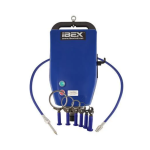
Unleash the full potential of your business operations by integrating HRMS with your ERP system.
Understanding the Synergy Between HRMS and ERP Systems
To grasp the transformative impact of integrating Human Resource Management Systems (HRMS) with Enterprise Resource Planning (ERP) software, it is essential to understand their individual functions. HRMS focuses on the management of all human resource-related activities, from recruitment and payroll to performance evaluations. ERP software, on the other hand, are designed to streamline and automate core business processes such as finance, supply chain, and operations. When these two systems work in tandem, they create a holistic infrastructure that supports and enhances the strategic alignment of human resources with overall business goals.
This synergy enables a seamless flow of information between HR and other departments, ensuring that all facets of the organization are working together efficiently. By integrating HRMS with ERP, businesses can gain a comprehensive view of their operations, which promotes informed decision-making and proactive management of both human and material resources.
Key Benefits of HRMS and ERP Integration for Businesses
Integrating HRMS with ERP systems offers an array of benefits that can lead to significant improvements in business operations. One of the main advantages is the reduction of data redundancies and errors, as information is entered and maintained in a singular system. This integration also facilitates enhanced analytical capabilities, allowing companies to generate detailed reports that can inform strategic planning and resource allocation. Furthermore, it improves regulatory compliance by providing a centralized platform for managing employee information in accordance with various laws and regulations.
Another key benefit is the optimization of talent management, as the integrated system provides insights into workforce productivity and helps identify skill gaps. Additionally, it streamlines processes such as onboarding, training, and benefits administration, which not only saves time but also enhances the employee experience. Overall, the integration of HRMS and ERP systems leads to increased operational efficiency, better financial management, and a more agile and responsive organization.
Strategic Planning for HRMS and ERP System Integration
Strategic planning is pivotal when integrating HRMS with ERP systems to ensure a smooth and successful transition. Businesses should start by establishing clear goals and objectives for the integration, such as improving data accuracy or enhancing interdepartmental collaboration. It is also crucial to conduct a thorough assessment of both existing systems to identify any compatibility issues or customization needs. Additionally, involving key stakeholders from HR, IT, and other relevant departments in the planning process helps ensure that the integrated system meets the diverse needs of the organization.
Developing a detailed implementation roadmap is another essential step. This includes setting timelines, allocating resources, and determining milestones for tracking progress. Organizations may also need to consider employee training programs to familiarize staff with the new integrated system. By approaching the integration with a strategic mindset, businesses can minimize disruptions to their operations and maximize the benefits of their HRMS and ERP systems working in harmony.
Overcoming Challenges in HRMS and ERP Integration
While the integration of HRMS and ERP systems can be highly beneficial, businesses may encounter several challenges along the way. One common issue is resistance to change from employees who are accustomed to legacy systems. To address this, effective communication and change management strategies are essential. Ensuring that employees understand the benefits and are provided with adequate training can facilitate a smoother transition.
Technical challenges such as data migration, system compatibility, and maintaining data security are also prevalent. Businesses must invest in robust data migration plans and work closely with IT professionals to mitigate these risks. Additionally, choosing the right integration partner and technology solution that aligns with the company’s specific needs can help overcome potential technical obstacles. By anticipating these challenges and proactively developing solutions, organizations can ensure a successful integration of HRMS and ERP systems.
Best Practices for a Successful HRMS and ERP Integration
Adopting best practices is crucial for a successful HRMS and ERP integration. One of the foremost practices is to maintain clear and continuous communication throughout the project. Keeping all parties informed about the integration’s progress and any arising issues can foster collaboration and support. It is also recommended to start with a pilot program to test the integration process, allowing for the identification and rectification of any issues before a full-scale rollout.
Additionally, prioritizing data integrity and security is paramount. Implementing rigorous data checks, establishing data governance protocols, and ensuring compliance with privacy regulations are essential steps in protecting sensitive employee information. Lastly, ongoing support and maintenance are necessary to address any post-integration issues and to adapt the system to evolving business needs. By following these best practices, businesses can achieve a seamless and efficient integration of their HRMS software and ERP systems.


